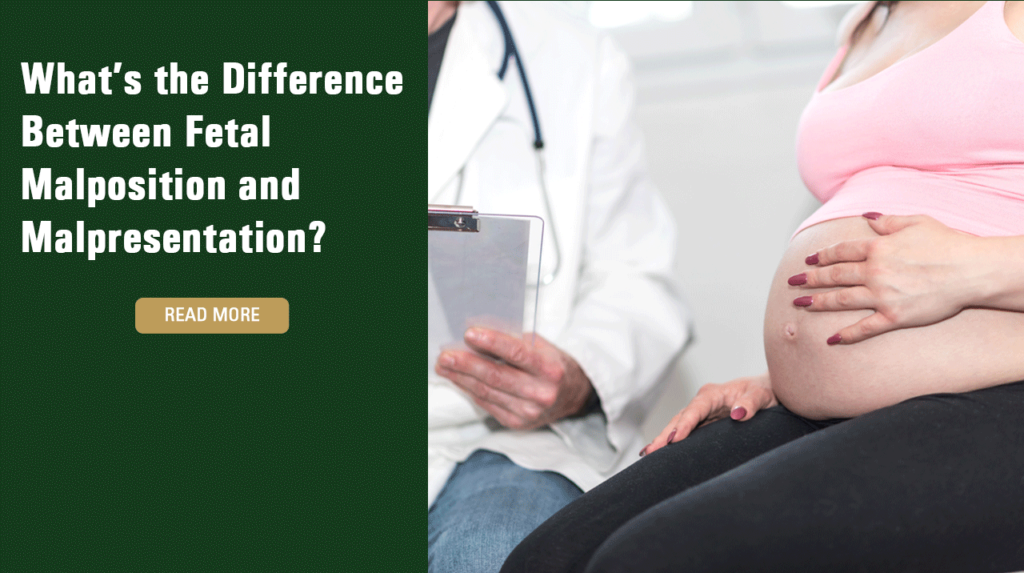What’s the Difference Between Fetal Malposition and Malpresentation?

Fetal malposition and fetal malpresentation are medical terms that describe the positioning of a baby before birth. Each of these positioning problems has differing characteristics, but both can increase the risks of birth injuries if they are not promptly addressed during labor and delivery. Here is some information about fetal malposition and malpresentation that you should know from the Philadelphia birth injury attorneys at the law firm of Raynes & Lawn.
Fetal Malposition
When the fetus is inside of the mother’s uterus, its position is described by how the baby faces the mother’s spine. When a baby is not positioned headfirst for labor and delivery in an ideal way, it is called fetal malposition. The correct head-down position is when the baby faces the mother’s back with the chin tucked down so that the back of the head is prepared to move into the birth canal through the pelvis. Fetal malposition can occur in several ways as described below.
Occiput Posterior Position
In this type of fetal malposition, the baby is in a head-down position, but the baby is facing the mother’s front instead of her spine. This is called an OP presentation and includes defined subcategories of left OP or right OP based on whether the baby’s head is faced to the left or right. A baby in an OP presentation can slow its progress through the mother’s birth canal.
Transverse Position
When the baby’s position is transverse, it is sideways, has the shoulders or back over the mother’s cervix, and the baby’s head is either not engaged or is not in the pelvis. Thie transverse malposition is also referred to as an oblique position. If labor starts while the baby is in this position, the risk of fetal compromise and uterine rupture is greatly increased if the problem is not addressed.

Fetal Malpresentation
For a baby in the womb, its presentation refers to the presentation of the baby’s body leading out of the birth canal. In a fetal malpresentation, the baby might lead out of the birth canal with a different body part than the head through the mother’s pelvis.
Some of the types of fetal malpresentation include the following:
- Breech presentation – Occurs when the baby’s feet or bottom are positioned to come out of the birth canal first
- Transverse presentation- When the baby’s side or shoulder presents down inside of the birth
canal instead of the head - Brow or face presentation – Occurs when the baby’s neck, face, or brow will present first because of the partial extension of the baby’s head
- Compound presentation – Occurs when the baby’s leg or hand presents next to the baby’s bottom or head
Out of these various types of malpresentation, the breech presentation is the most common. Fetal malpresentation can be discovered before labor by ultrasound and a prenatal examination. In many cases, fetal malpresentation that is not resolved before delivery might require the use of assisted delivery devices such as a vacuum extractor or forceps. An emergency cesarean section might be ordered if the fetus shows signs of fetal distress.

Causes of Fetal Malpresentation
The cause of fetal malpresentation is often not known. However, there are several risk factors that can increase the risk of fetal malpresentation, including the following:
- Pelvic or fibroid tumors
- Placenta previa
- Pelvic inflammation
- Abnormalities of the uterus
- Septate uterus
- Pregnancy with multiples
- Fetal malformation
While malpresentation can be identified before delivery, it is not discovered before delivery in a large number of cases. If an infant’s malpresentation is discovered before delivery, the doctor might try to turn the baby manually. If it is not detected before delivery, an emergency c-section might be necessary. When fetal malpresentation is not diagnosed, several complications can occur. Some of these might include cord prolapse, fetal distress, skull fractures, swelling, and jaundice.
Diagnosis and Management of Fetal Malpresentation
Fetal malpresentation should be diagnosed early so that patients can have more options. In most cases, malpresentation will be diagnosed through a vaginal or abdominal examination and then confirmed with an ultrasound. Pregnant mothers need to receive regular prenatal care to detect fetal malpresentation early. While fetuses can change presentation and position throughout pregnancy, they are less likely to do so after 37 weeks of gestation. If a doctor suspects that an infant is in a malpresentation after 37 weeks, they might recommend a
procedure called an external cephalic version during which the doctor will try to manually turn the baby around into the correct presentation. If the baby remains in malpresentation during delivery, the doctor might recommend an emergency c-section.
Complications of Fetal Malposition or Fetal Malpresentation
If vacuum extractors or forceps are improperly used during labor and delivery, excessive pressure can be placed on the baby’s head. This can cause fractures, brain damage, nerve damage, cerebral palsy, and other problems.
Consult Our Philadelphia Birth Injury Attorneys
If your baby was born in fetal malposition or malpresentation that was not diagnosed, you might have legal rights to pursue a malpractice claim if your baby sustained injuries as a result. Contact Raynes & Lawn today for a free case evaluation to learn more about your rights by calling us at 1-800-535-1797.

For the general public: This Blog/Website is made available by the law firm publisher, Raynes & Lawn, for educational purposes. It provides general information and a general understanding of the law but does not provide specific legal advice. By using this site, commenting on posts, or sending inquiries through the site or contact email, you confirm that there is no attorney-client relationship between you and the Blog/Website publisher. The Blog/Website should not be used as a substitute for competent legal advice from a licensed attorney in your jurisdiction.
For attorneys: This Blog/Website is informational in nature and is not a substitute for legal research or a consultation on specific matters pertaining to your clients. Due to the dynamic nature of legal doctrines, what might be accurate one day may be inaccurate the next. As such, the contents of this blog must not be relied upon as a basis for arguments to a court or for your advice to clients without, again, further research or a consultation with our professionals.
